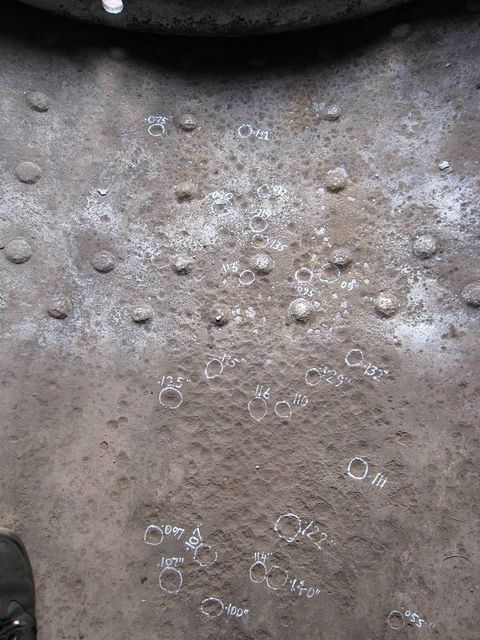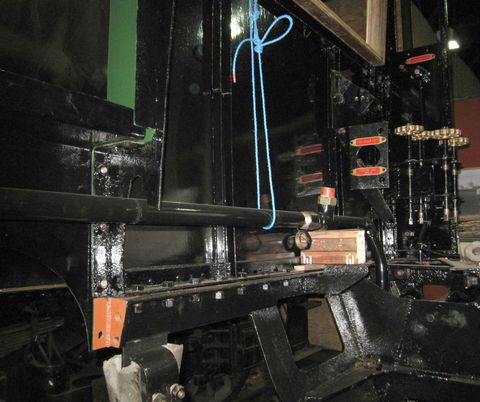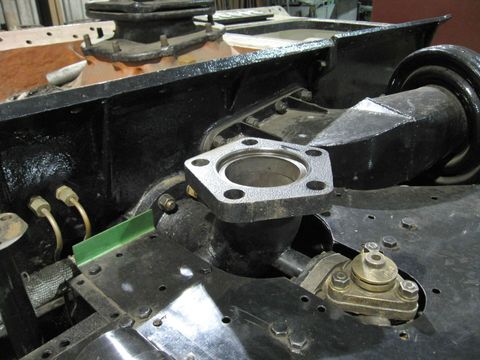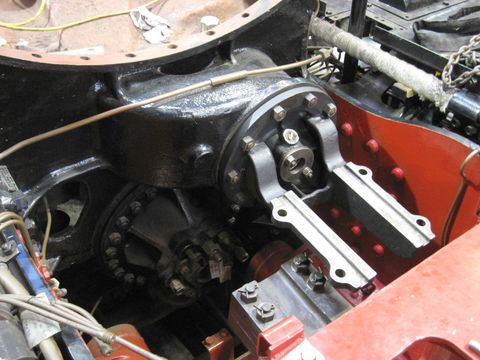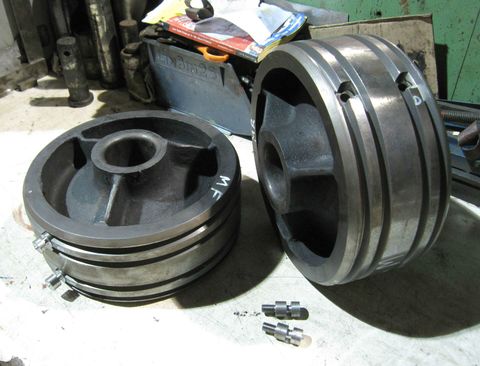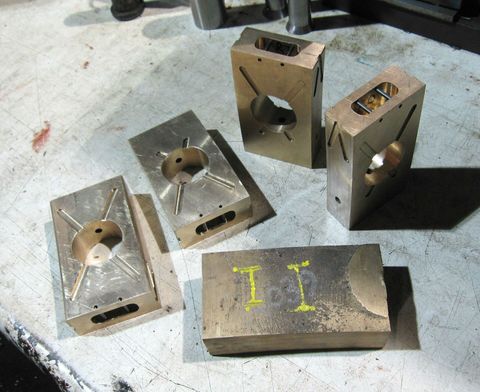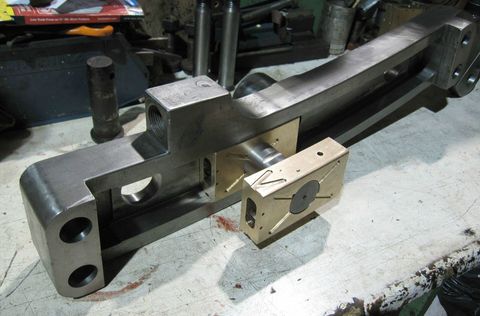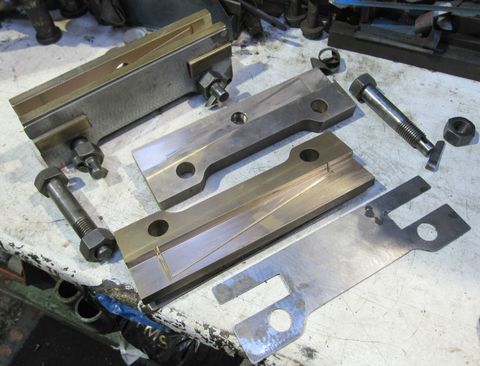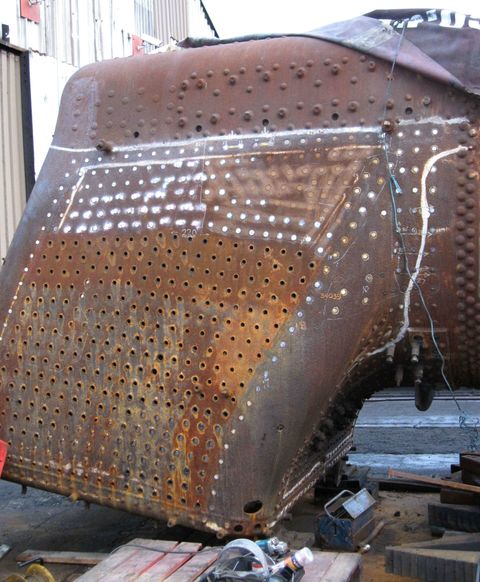Boscastle Locomotive Limited
27th November 2015
Visit to South Devon Railway and Workshops
On September 24th Mike Playle, Peter Greenwood, and our contractor, Andy Morgan visited the SDR to follow up on an initial email enquiry in which we asked if they would be able to supply a completely new inner firebox for Boscastle.
It had come to our attention that the SDR had already supplied a new inner firebox for Taw Valley and we already have in our possession some components which were made by the same supplier and supplied to us in anticipation of us repairing our existing firebox. Upon further examination of our firebox the full extent of the work required led us to the conclusion that a complete replacement would be a far better long term solution. The components already to hand can be used by the SDR in the production of a new box, so the parts we already own will not be wasted.
We were met by Rob Le Chevalier and Paul Pridham on behalf of the SDR who first took us on a tour of their facilities. The SDR recently bought the former Pridhams engineering business and the combined operation have an extremely well equipped facility which specialises in the supply of boiler components and in house boiler repairs. Regarding Bulleid boilers, the SDR are the prime source of parts to the heritage industry, for example if we were to go to another boiler shop to obtain another quote that other supplier would be using the SDR as their component supplier!
Rob and Paul subsequently visited Loughborough to inspect our boiler and we currently await their report and final quotation for the work. Interestingly upon hearing of our enquiry to the SDR for this work two other Bulleid owners have expressed an interest in having new fireboxes made for their light pacifics. The SDR have been made aware of this and they have indicated that if such additional orders came to fruition there would be opportunities for cost savings to all three groups.
If we proceed with this order the boiler will have to travel to the SDR, but prior to such a move we would do an amount of preparatory work on the boiler in order to save time and costs. The SDR would work with our boiler insurance company whose inspector would agree all stages of the operation. In order to make the overall cost as low as possible in addition to preparatory work before the boiler goes to Devon we would fit the boiler stays ourselves upon the return of the boiler to Loughborough.
- Peter Greenwood
Boscastle Locomotive Boiler Repair
Following on from our visit to the South Devon Railway it was our turn to host Rob Chevalier and Paul Pridham at Loughborough on 14th October so that they could assess the condition of the boiler at first hand. In preparation for this the tarpaulins were moved aside and ladders set up to provide access to the inside of the barrel so that they could see as much as possible of the waterside of the barrel and firebox. They expressed general satisfaction with the condition and could see no major obstacles to returning it to service. One feature that Paul Pridham particularly searched for were cracks radiating from rivets at the front of the barrel as these have featured large on previous Bulleid boilers that have passed through their works. Fortunately for us he could not find any.
SDR are to quote for a replacement inner firebox taking account of the components already made and supplied which will be returned. By way of preparation they expect us to do most of the work to remove the old inner, effectively leaving it hanging by a few stays. This would also work in the reverse direction. SDR would insert sufficient stays to position the new inner and leave us to fit the remainder. SDR believe that one year is a realistic time frame for their portion of the work, although I have now developed antenna for comments in the railway press about boiler work going to SDR and they do seem to be pulling in a lot of business!
One area of uncertainty is how the “competent person” will view the pitting in the bottom of the barrel – see photo.
To cover this uncertainty South Devon Railway have been asked to include for inserting a patch as this would be worst case and give us a bounding quote. Since the visit, and largely prompted by the uncertainty arising from this pitting, I have spoken to Bob Garnett who is Engineering Manager for the insurer – and who also does some of the site inspections at South Devon (as I understand things he would either be the competent person or the competent person would defer to him). He would prefer to accommodate the pitting rather than weld in a patch and came across as very supportive and willing to make informed judgements.
One point that he made was that these boilers were designed for 280 psig so this gives us an additional reserve straight away operating at 250 psig. This prompted me to undertake some simple stress calculations based on thickness remaining after subtracting the depths of pit that we have measured with a depth micrometer. These calculations show that there appears to be a reasonable reserve against yield and ultimate stress for typical boiler plate at the deepest measured pit. If I was the competent person I would want to know actual thickness rather than the inferred thickness on which I have based my assessment – but I am hopeful that this is heading in the right direction.
I remain on tenterhooks for the quote.
- Mike Playle
22nd October 2015
Much of the steam heat pipe under the cab has been renewed as it had corroded badly in places and is difficult to get at when the loco is in service. The completed pipe is shown viewed from the firebox area looking towards the cab, the ‘T’ piece is where the steam supply from the boiler is connected.
22nd October 2015
This shows the elbow for the main steam supply to the middle cylinder fitted, the bronze valve fitted to it is a snifting valve. Each cylinder has one of these fitted so that when the loco is coasting, air is admitted through the valve to help cool the superheater elements and prevent ash being sucked back down the blast pipe into the cylinders.
12th October 2015
The middle cylinder valve liners have finally been bored to finished size so the process of re-assembly has begun. This photo shows the rear piston valve cover fitted, ready to receive the cross-head guides.
23rd October 2015
The two original middle cylinder piston valve heads have been machined to the correct size for the new liners. The old pegs which keep the valve rings in position were removed and new ones have been machined and trial fitted. Two of these can be seen sticking out of the left hand valve head, the protruding parts will be sawn off after they have been tightened into position.
12th November 2015
The new die blocks for the left and right hand expansion links have been finished. One of the phosphor bronze blanks can be seen on the right. A great deal of fiddly machine work has gone into these relatively small items, the finished products are a tribute to the skill of our volunteer machinists.
17th November 2015
The die blocks have been fitted individually to their respective expansion link halves and then fitted as pairs to the assembled expansion links. The photo shows two left hand die blocks in one half of the left hand expansion link to give some idea of the finished assembly. The radius rod will ultimately fit between the two blocks, which in turn slide between two expansion link halves.
18th November 2015
Work to the middle cylinder, valve crosshead guides has been completed, these have been re-machined to remove wear, oil ways have been re-cut and additional shims made to readjust the height of the assembly. The photo shows an assembled guide next to the component parts of the opposite pair. These will be mounted on the mid cylinder rear valve cover, shown in one of the accompanying photo’s.
10th November 2015
Now that plans for the boiler overhaul almost finalised, we have started the task of removing more stays from the firebox sides. This shows the right hand side of the firebox with all of the stay heads cut off, ground flat and centre punched ready for drilling. There doesn't look many but there are two hundred and twenty on this bit alone!
Images on this page are copyright A.J.Morgan, M.Playle
